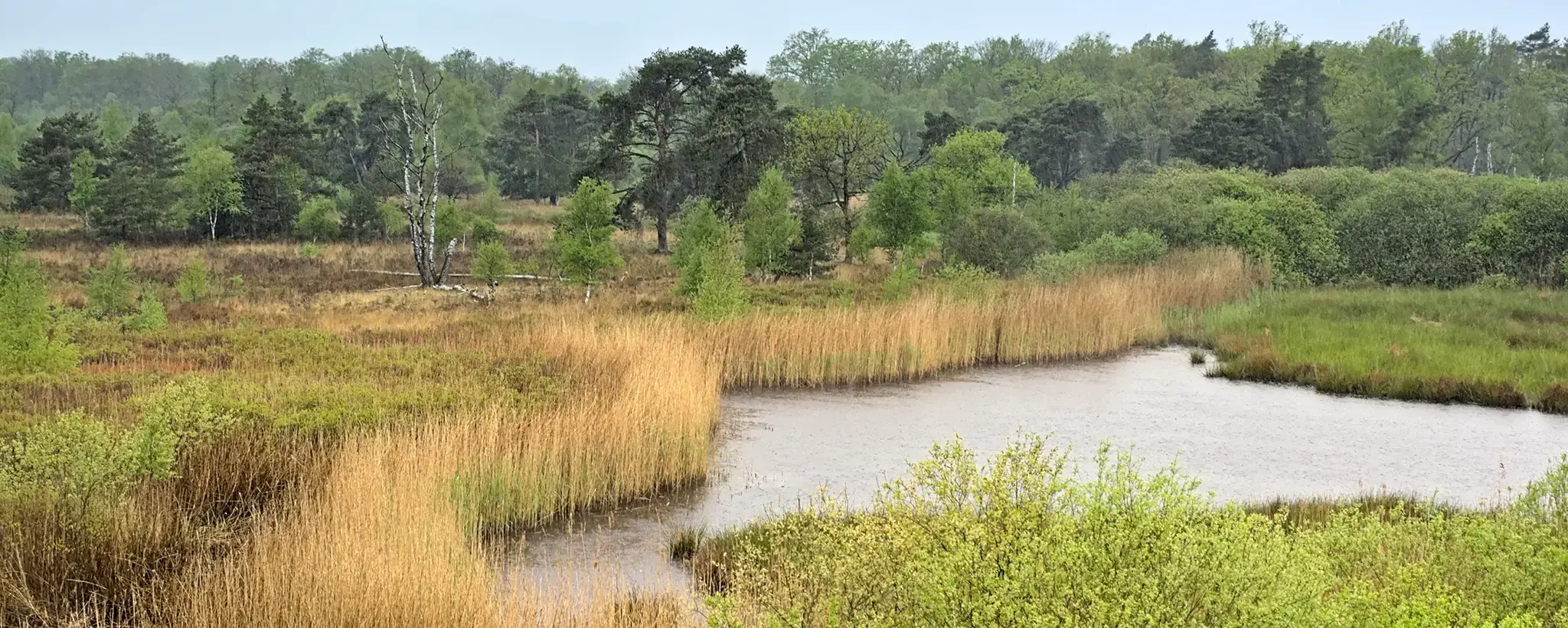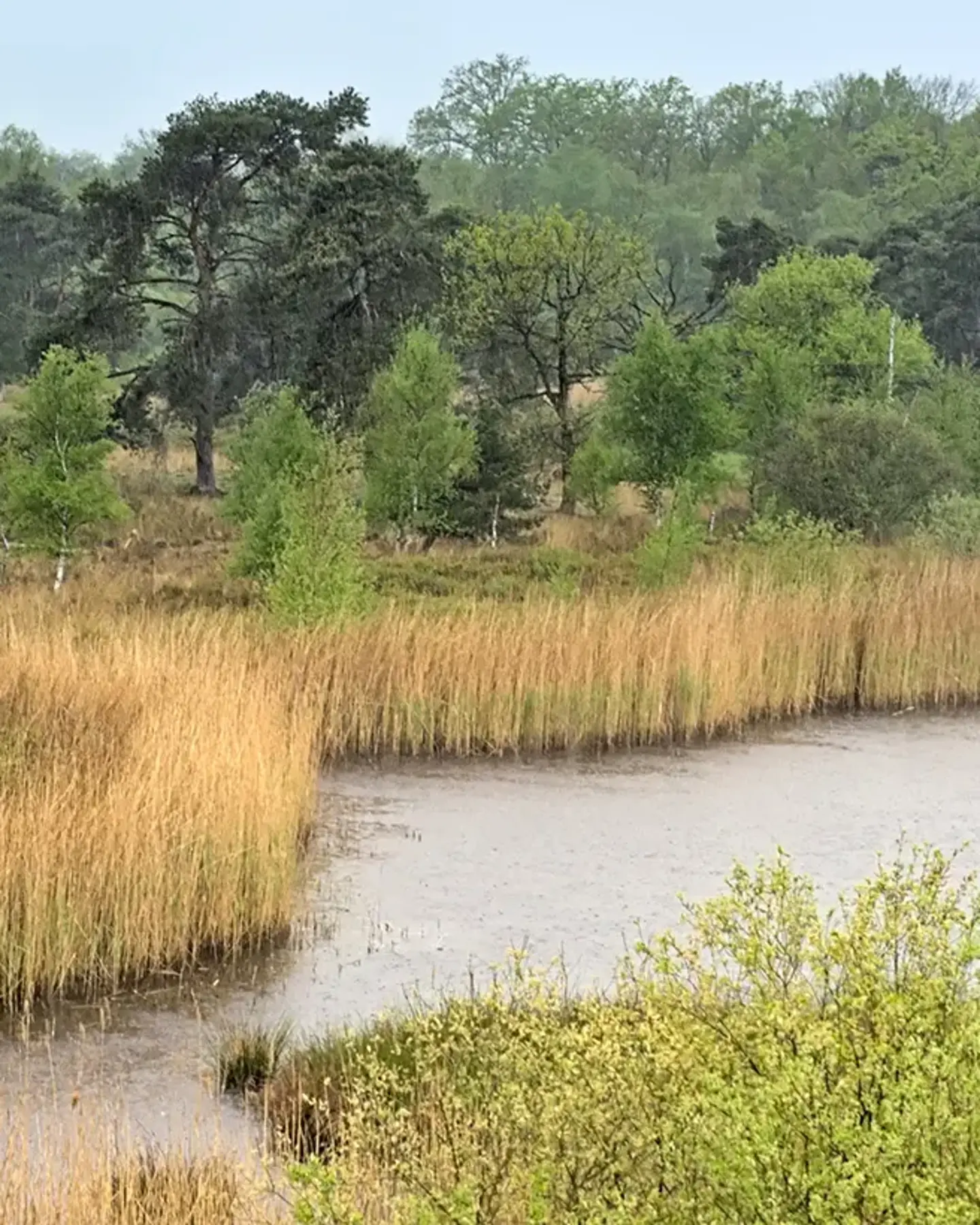

Green Packaging – Profitable Climate Protection
With a pilot project on environmentally friendly transport packaging, ZF is taking another step toward making its own production more sustainable. A new packaging material with a high proportion of reed grass helps to preserve the peatlands that are vital for the climate, to reduce the use of plastic and to cut costs.
Let's take a trip into the countryside, into the peatlands to be precise. After the last ice age, peatlands began to form everywhere on land where water was abundant and filled cavities in the soil. Plants that absorb carbon dioxide and produce oxygen sink to the bottom after dying in the water. The absence of air and the acidic water prevent plant residues from completely decomposing. Instead, the organic mass turns into peat. In this way, peatlands extract huge amounts of carbon dioxide from the atmosphere and store it as carbon in the peatland. According to the United Nations Environment Programme (UNEP), peatland accounts for just about three percent of the world's land area. Yet it stores nearly 550 billion tons of carbon – twice as much as all the forests on Earth combined. In total, peatlands bind a third of the carbon in the soil. This makes these special wetlands effective carbon sinks and thus an important ally in the fight against the climate crisis.
Only intact Peatlands are Climate Savers
Draining peatlands to turn them into agricultural land destroys the natural function of binding carbon dioxide. When the plant-based carbon in the peat comes into contact with the oxygen in the air, the greenhouse gas CO2 is created, which escapes into the atmosphere, at a rate of an estimated two billion tons per year. At the UN Climate Change Conference in Glasgow in 2021, the peatland expert Hans Joosten warned: "Peatlands are climate bombs when dry." Joosten is now professor emeritus at the University of Greifswald. To slow climate change and meet the targets set out in the 2015 Paris Agreement, it is therefore essential to retain the carbon in the peatlands by keeping it wet or rewetting it.
What does all of that have to do with ZF? The technology company is working on a pilot project that will help preserve peatlands and promote their sustainable management. This paludiculture is an innovative alternative to conventional agriculture on drained peatlands, which ensures farmers can earn a livelihood. In the case of the ZF project, this entails reed grass from the peatland, which is processed together with recycled paper into transport packaging for transmission components. The aim is to replace the conventional plastic transport packaging. But taking one step at a time.
Search for green Transport Packaging
After the start of the project in spring 2022 in the Commercial Vehicle Solutions (CVS) Division, the project team decided to package the mechatronics module for the TraXon commercial vehicle transmission on ZF-internal transport in a completely new, environmentally friendly material. Key requirements included making the transport packaging much more sustainable than the existing plastic solution and even cheaper. Ideally, the results of the pilot test should be transferable to other products and divisions.

The mechatronics module sits on top of the TraXon transmission housing.
Stacked in lattice boxes, altogether some 290,000 TraXon AVT modules travelled from Hanover to Friedrichshafen for transmission assembly in 2023. They were are shipped overseas to Jiaxing in China and Sorocaba in Brazil. Each of the modules sits in a sturdy tray made of polyethylene terephthalate (PET), which protects the component. The problem is that petroleum is the basic material for this disposable packaging. In addition, the disposal of the thermoplastic PET also generates costs. So why not replace the plastic tray with a tray made of so-called molded pulp? Molded pulp is a mix of recycled paper and reed grass. The reed grass is harvested in peatlands. While the ecological footprint of each of the 500-gram trays made of PET is about 1000 grams of CO2, it is just 100 grams in the molded-pulp version.

For transport between the ZF locations, each mechatronics module for the TraXon commercial vehicle transmission has so far been well protected in a sturdy tray made of the environmentally harmful plastic PET.
Compelling Cost and Eco-Balance
Together with a new supplier, the interdisciplinary ZF team worked in the best sense of the ZF Way principles of passion, anticipation and accountability on the design and optimal material composition for the transport tray made of molded pulp. In September 2023, the first prototype was available in two different compositions. Two batches of 100 molded-pulp trays were each used as part of daily processes. "Basically, they worked and fulfilled 80-90 percent of the requirements, but there was still room for improvement with handling. We are convinced that we will be able to take a decision on series production once the results with the second prototype are in," says Dr. Burkhard Bogisch, who initiated and is responsible for the project. The second prototype will be tested with 200 sample trays again under real production conditions and can then go into series production in due course.
Although the composite material of paper and reed grass is also disposable packaging, it has decisive advantages over PET: It can be produced from sustainably sourced raw materials and recycled efficiently at the end of the product's life. Recycling to return the material to the manufacturing process of alternative packaging would be a perfect contribution to the circular economy. This is also possible in principle, but probably not yet viable economically. The current plan is to initially sell the used packaging to biogas plants, which already reduces life cycle costs. Composting is another possibility. Here, time will show how economy and ecology can best be combined.

Manufactured from the more sustainable and even cheaper molded-pulp material made from recycled paper and reed grass, the carbon footprint per tray drops to a tenth of a PET equivalent.
Molded-pulp Packaging offers great Potential
Added to the cost savings with procurement and disposal is the fact that the prices for reed grass have remained fairly stable for years. Such packaging is also independent of rising CO2 and plastic levies. "Compared to the transport trays made of PET, we have a significant cost saving for the molded-pulp trays in addition to the ecological advantage," says a delighted Bogisch.
With the amount of in-house transport packaging that ZF uses throughout the Group, the potential of molded-pulp trays for cutting costs and boosting climate protection is huge. It will be even greater if it is possible to include the transport packaging from suppliers to ZF and from ZF to its customers.







